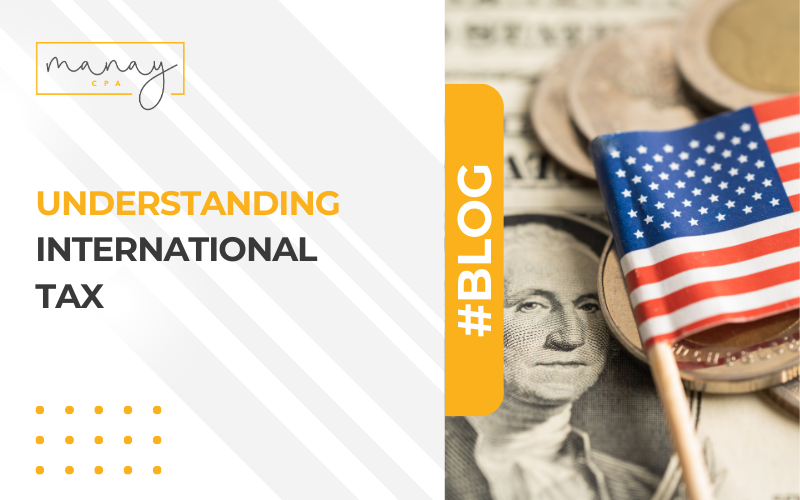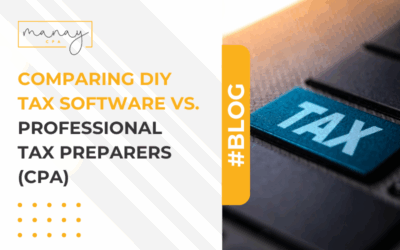International Tax: Guidelines, Treaties & Implications

As the world becomes increasingly interconnected, businesses expand beyond their borders like never before. With global expansion comes the need to understand international tax laws and regulations. This article will explore the fundamental concepts behind the international tax, including residency, source, and permanent establishment. We will also explore the impact of tax treaties, transfer pricing, controlled foreign corporations, tax havens, and compliance. Finally, we will examine case studies of successful international tax planning and provide best practices for managing international taxes and staying compliant.
Table of Contents
ToggleIntroduction: What is International Tax, and Why is it Important?
International tax refers to the set of laws and regulations that govern the taxation of individuals and companies across national borders. It is significant because it can significantly impact a business’s bottom line. Failure to comply with international tax laws can result in penalties, fines, and legal action. Understanding international taxes is essential for global businesses.
Key Concepts: Understanding Residency, Source, and Permanent Establishment
Residency refers to where an individual or company is based for tax purposes. Residency rules vary from country to country. However, they typically include factors such as where a person or company is incorporated, where they have permanent residence, and where they conduct business.
Income source rules can be complex and vary from country to country. The source refers to where income is earned. For example, if a US-based company generates revenue from sales in France, it is considered a French source.
Permanent establishment refers to a fixed business location in a foreign country. It can include an office, a factory, or a warehouse. If a company has a permanent establishment in a foreign country, it may be subject to taxation in that country.
Tax Treaties: How Treaties Affect Cross-Border Taxation
Tax treaties are agreements between two or more countries that determine how taxes will be treated for individuals and companies across national borders. These treaties prevent double taxation and ensure income taxation in the country where it was earned. Tax treaties can also reduce tax rates, exemptions, and other benefits.
For example, if a US-based company operates in Germany, it may be subject to taxation in both the US and Germany. However, if there is a tax treaty between the US and Germany, the company may be able to claim a foreign tax credit in the US after the taxes are paid in Germany. It can reduce the company’s overall tax liability.
Transfer Pricing: Guidelines for Setting Prices Between Related Entities
Transfer pricing refers to the prices charged for goods and services between related entities, such as a parent company and its foreign subsidiary. Transfer pricing can be complex because associated entities may be incentivized to charge prices not reflective of market value.
Many countries have established guidelines for determining transfer prices to address this issue. These guidelines typically require that transfer prices be set at arm’s length, meaning they should be like fees charged between unrelated parties.
Controlled Foreign Corporations: Tax Implications of Foreign Subsidiaries
A controlled foreign corporation (CFC) is a foreign corporation in which a US shareholder owns more than 50% of the stock. CFCs can have significant tax implications for US shareholders because they are subject to US taxation on their share of the CFC’s income. The US has established rules for determining when a foreign corporation is a CFC. These rules prevent US shareholders from avoiding US taxes by shifting income to foreign subsidiaries.

Tax Havens: Understanding the Impact of Low-Tax Jurisdictions
Tax havens are jurisdictions that offer low tax rates and other benefits to individuals and companies within their borders. While tax havens can provide legitimate benefits, such as access to new markets and lower operating costs, they can also be used for tax evasion and other illegal activities.
Many countries have established rules to prevent companies from shifting profits to low-tax jurisdictions to address the issue of tax havens. These rules typically include provisions for taxing income earned in tax havens or imposing penalties on companies that engage in tax evasion.
Compliance: Navigating Reporting and Disclosure Requirements
International tax compliance can be complex because it requires compliance with multiple countries’ tax laws. It can include reporting and disclosure requirements, such as filing tax returns, submitting financial statements, and providing information on related-party transactions.
To ensure compliance, companies need to understand the reporting and disclosure requirements of each country in which they operate. It may require tax professionals familiar with multiple jurisdiction tax laws.
Case Studies: Example of International Tax Planning and Pitfalls to Avoid
Successful international tax planning requires a deep understanding of multiple countries’ tax laws and regulations. It also requires careful consideration of the company’s business objectives. In this section, we will examine two case studies of successful international tax planning.
Case Study 1: XYZ Corporation is a US-based company that operates in multiple countries. To minimize its tax liability, XYZ structured its operations to allow it to take advantage of tax treaties and transfer pricing rules. As a result, XYZ reduced its overall tax liability while remaining compliant with the tax laws of each country in which it operated.
Case Study 2: ABC Corporation is a Canadian-based company that operates in the US. To minimize its tax liability, ABC established a US subsidiary and structured its operations in a way that allowed it to take advantage of US tax laws. As a result, ABC reduced its overall tax liability while remaining compliant with US and Canadian tax laws.
When it comes to international tax planning, several techniques can be used to minimize tax liabilities and maximize profits. These include taking a tax position based on a treaty, using foreign accounts to leverage, and moving money offshore. However, it is essential to note that some of these techniques may not be legal or ethical and could lead to severe consequences such as fines or even criminal charges. Therefore, it is crucial to consult with experts in the field and ensure compliance with all relevant laws and regulations.
Conclusion: Best Practices for Managing International Tax and Staying Compliant
Managing international taxes requires a careful balance between minimizing tax liability and staying compliant with multiple countries’ tax laws. To help achieve this balance, here are some best practices for managing international taxes:
- Understand the residency, source, and permanent establishment rules of each country in which you operate.
- Monitor changes to tax laws and regulations in each country in which you operate.
- Establish transfer pricing policies that comply with each country’s guidelines.
- Be aware of the tax implications of foreign subsidiaries and ensure compliance with the rules of each country in which you operate.
- Avoid tax evasion or other illegal activities.
- Work with tax professionals familiar with multiple jurisdiction tax laws.
International tax can be a complex issue, but companies can successfully navigate international taxation complexities with the proper understanding and guidance. By following best practices for managing international taxes, companies can expand their business globally while minimizing tax risks.

Manay CPA Expert Authors
Published on: 30 May 2023
Last updated on: 09 April 2024
Manay CPA is a reputable, full-service CPA firm based in Atlanta, Georgia. Founded in 2001, we provide comprehensive accounting and tax solutions to individuals and businesses across all 50 states.





